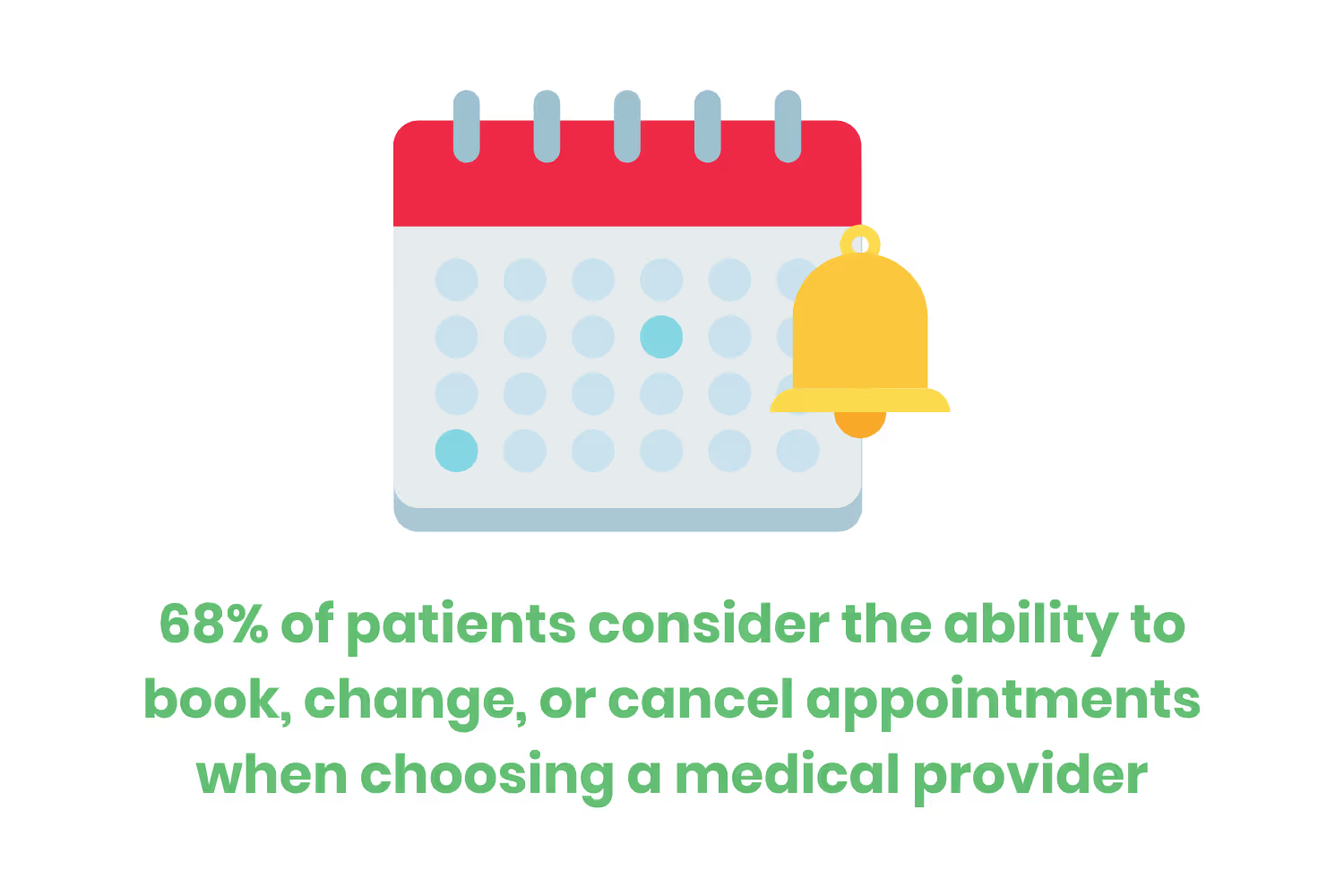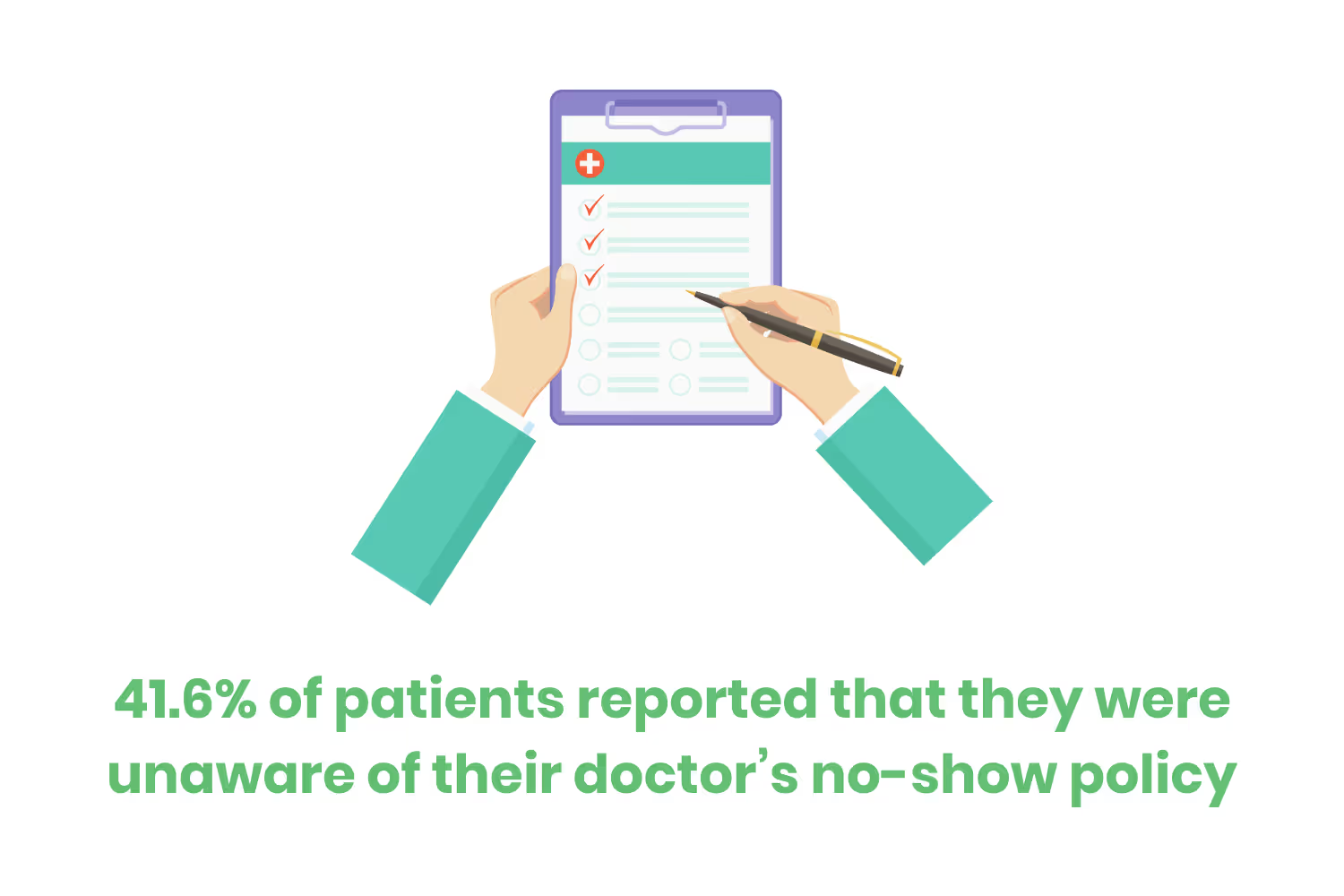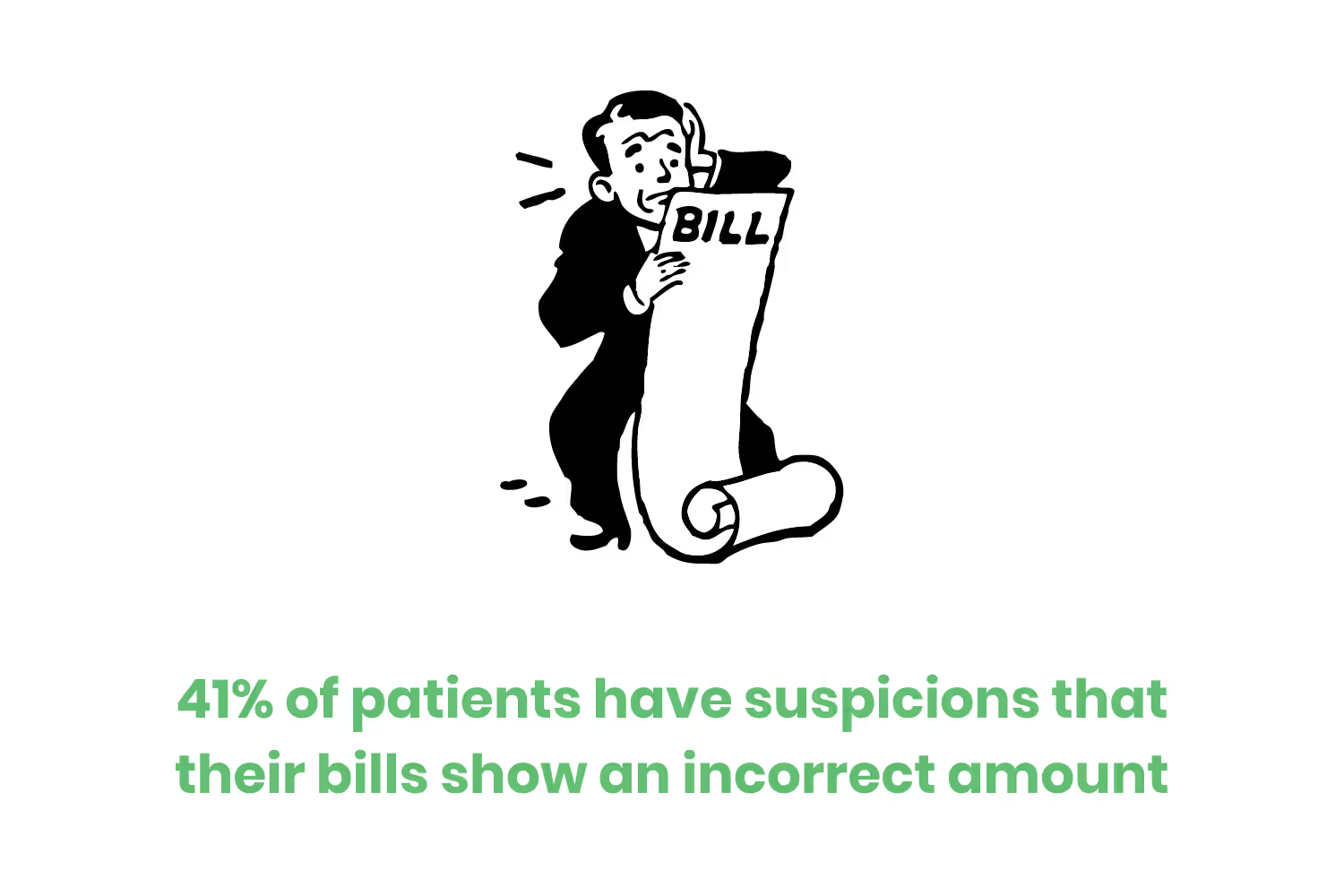50+ Patient Satisfaction Statistics that Every Practice Should Know
Each part of the patient journey affects the overall experience. If you don’t consider the parts that frustrate the public, then you won’t as likely reach a high patient satisfaction score.

Too many people leave their doctor’s appointments thinking, “I never want to do that again.”
Can you relate? I know I can after several unpleasant experiences.
If a doctor leaves a negative impression on their patients, it can harm the practice in a few ways. Dissatisfied clients are more likely to…
- Leave a negative online review
- Rant about the practice on social media
- Leave the practice to seek treatment elsewhere
- Delay paying their bill
- Skip their appointments
Each of these factors causes a poor reputation for the practice, as well as a loss in both clients and revenue.
To prevent these negative outcomes, the medical space is moving towards value-based care. This means that healthcare practices are putting more emphasis on…
- Bedside manners
- Transparent communication
- Ease of access
- The patient experience
- Patient satisfaction
Medical practices are starting to pursue higher patient satisfaction scores so that they can achieve this value-based care.
To do this, practices must focus on the different aspects of a patient’s visit. Each part of the patient journey affects the overall experience. If you don’t consider the parts that frustrate the public, then you won’t as likely reach a high patient satisfaction score.
To help you better understand how to improve these scores, here are over 50 patient satisfaction statistics for each step of the patient’s experience.
Access to Patient Portals
When patients visit your practice for routine tests, they’re going to want to find the results of those tests easily. Or maybe they want to look back at their appointment notes for reminders about their treatment plan. Often, people use a patient portal to access their medical records for this information.
That isn’t the only reason that they might be using these systems. Patient portals are offering even more helpful features such as online payment and scheduling.
While these systems sound convenient, they may also come with complications and technical difficulties. The more kinks that there are in a patient portal, the greater the chance your patients will become frustrated with your practice. To prevent this from happening, make sure that you focus on online access with a user-friendly interface.
Since so many people rely on their providers to offer patient portals, these systems need to come with easy access. Otherwise, patients may choose to switch practices since they value these convenient tools so much.
- 58% of medical organizations have improved patient access to their practice. (MGMA)
- More than 3 out of 4 patients reported using a patient portal. (MGMA)
- 78% of patients reported that they would be willing to use a secure online payment method to access medical files and share information with their doctors. (Intuit)
- 83.3% of patients used these portals as a means to access test results. (MGMA)
- 59.3% of patients used them to view protected health information.
- 59% of Millenials say they would switch doctors if it meant better online access. (Intuit)
- In comparison, only 29% of Baby Boomers say the same.

- 89% of patients trusted their healthcare provider with keeping their electronic protected health information safe in 2019. (Accenture)
- This dropped to 83% in 2020.
Online Scheduling and Appointment Reminders
Scheduling appointments and receiving reminders go hand in hand with accessing patient portals. As I already mentioned, these features are becoming more popular for portals and therefore must also be user-friendly. That way, a patient can…
- Schedule their visit for a time most convenient to them
- Receive reminders so they don’t forget a visit
- Easily cancel the appointment if something comes up
If patients have difficulties scheduling or canceling their appointment online, they’ll end up calling your practice instead. This defeats the entire purpose of having the online option. But calling your office also has its challenges. If people are on hold with your practice or sitting through your automated answering system for a while, they’ll get frustrated.
Another thing to keep in mind is that you don’t bombard them with too many reminders once they do schedule their visit. This could also make them frustrated, annoyed, and choose to switch practices.
Of course, you don’t want these challenges with your scheduling system and appointment reminders. These processes both play a role in patients’ overall experience.
- 81% of patients reported that they would use a secure website or phone application to fill out medical/registration forms before walking into an appointment to make their appointment more efficient. (Intuit)
- 68% of patients consider the ability to book, change, or cancel appointments when choosing a medical provider. (Accenture)
- This is a 10% increase from 2016.

- Patients between the ages of 18 to 24 are the most common age group to become frustrated with scheduling an appointment. (Binary Fountain)
- 70% of patients value a medical provider that uses text notifications or emails concerning preventative or follow-up care. (Accenture)
- 38.1% of patients said that a text message could have helped in preventing the patient from missing an appointment. (MGMA)
- 23.8% said that a phone call could’ve helped.
- 19% said an email reminder could’ve helped.
- 57% of patients expect their medical provider to send an automated text, voicemail, or email reminder concerning scheduling appointments or taking medications. (My Synergy)

- 41.6% of patients reported that they were unaware of their doctor’s no-show policy. (MGMA)
Waiting Times
Waiting to see a doctor is often the most frustrating part of a patient’s visit to a doctor’s office, and not just because it’s boring. It lengthens the appointment and can take up a significant part of someone’s day. Sure, their health is most important, but people have other things they need to do.
When it comes to patient satisfaction, you need to take these wait times seriously. Otherwise, your clients could end up like some of the dissatisfied patients from some of the following surveys.
- 84% of people believe that wait time is important when considering the overall experience when visiting a doctor’s office. (Business Wire)
- 43% of patients say that waiting is the most frustrating portion of a doctor’s visit. (Binary Fountain)
- 10% of patients find that waiting for results is the most frustrating aspect.
- 43.3% of patients rarely or never know the length of their appointments. (MGMA)
- 30% of patients reported that they walked out of an appointment due to long wait times. (Business Wire)

- 20% of patients reported changing doctors for the sole reason of shorter wait times. (Business Wire)
- 53.2% of patients believe that they would have an improved opinion about a doctor’s appointment if they knew the length of the appointment before walking in. (MGMA)
Cost Transparency
Figuring out the cost of medical services isn’t as simple as when you go to the store and can read the price tag of an item. It would be nice if people could see their estimated cost before choosing to use a specific provider. That way, they could shop around for healthcare.
That’s a utopian idea. There’s so much involved in billing for these services, especially depending on someone’s insurance. However, healthcare is shifting more to improving price transparency. If your practice doesn’t keep up, then patients may become dissatisfied and switch to a different provider.
- 10% of patients find cost and payment to be the most frustrating aspect of a doctor's visit. (Binary Fountain)

- 65% of patients believe healthcare cost transparency significantly influences their overall satisfaction with a provider. (Accenture)
- 77% of people believe healthcare costs to be unpredictable. (Cision)
- All generations, but especially younger people, want doctors to provide insight into the cost of healthcare. (Cision)
- 41% of Millenials, 21% of Baby Boomers, and 18% of seniors request bill estimates before receiving treatment.
- 56% of patients plan to request a cost estimate in the future. (MGMA)
- 79% of ambulatory organization personnel are capable of generating a cost estimate upon request.
- Four out of five patients expressed they wished their doctors would communicate what portion of the bill their insurance covers compared to what they owe. (Ensemble Health Partners)
- 45% of patients reported that doctors are lacking when it comes to helping with managing financial responsibilities. (HealthPay24)
Payment Process
Speaking of service costs, patients need their doctors to communicate how to make a payment. If clients don’t understand how to pay, then your practice would just suffer from delayed or lost revenue.
Explaining the payment process could happen in a few different ways. For starters, you could have a conversation with the patient before they leave their visit. This might even include collecting their payment on-site. Or, you can send the instructions with their payment reminders.
Regardless of how you do it, you need to explain the process so they know exactly how to pay you. After all, if they didn’t know what to do and their account got sent to collections, they’d be pretty unhappy.
Offering a variety of payment options will improve this experience for them even more. If they have options that they’re familiar with, then they will likely make their payments on time.

- 41% of patients have suspicions that their bills show an incorrect amount. (HealthPay24)
- 77% of patients pay their medical bills in a paper format. (MGMA)
- Yet 52% of patients prefer electronic billing.
- 28% of Generation Y patients have dealt with confusion in regards to paying their doctor or the insurance company when receiving a medical bill. (Intuit)
- Only 8% of Baby Boomers reported the same confusion.
- 57% of patients have dealt with a collection agency due to at least one bill. (Intuit)
Efficient Communication
Everyone has questions about their health at some point. If we didn’t, we probably wouldn’t need to visit the doctor nearly as much. It would be nice if we could diagnose ourselves, but we aren’t all medical professionals. That would also put a lot of doctors out of a job.
As a medical professional, you need to make sure you effectively get answers to patients when they have concerns. Communication is one of the most important aspects of medical care.
Whether in person, over the phone, or via email, you need to perfect this communication. Otherwise, you’ll struggle to improve patient satisfaction.
- About one in five patients have found it difficult to reach their doctor’s office to ask a question, obtain test results, or make an appointment. (Intuit)
- 69% of patients reported that they would likely choose a medical provider that communicates with their patients through secure emails. (Accenture)
- This is up from 53% in 2016.

- The majority of patients believe that quick responses to follow-up questions through email or phone calls outside of an appointment play an important role in patient satisfaction. (Accenture)
- This holds true for 58% of patients who are Generation Z, Millenials, and Generation X.
- It’s also true for 63% of those 55 years old and older.
Conclusion
Each step of the patient journey has the potential to make or break someone’s experience. As you can see from these patient satisfaction statistics, so many details have an impact on how clients view your practice.
This goes without saying, but you want them to leave with a positive opinion about your organization. They’ll be more likely to…
- Return to your practice
- Leave positive reviews
- Rave about your practice to the people they know
- Pay their bills on time
All of these factors contribute to keeping your current clients, attracting new patients, and receiving revenue. Because of this, it’s even more important to boost patient satisfaction. This ensures that you don’t just stay in business, but become people’s number one choice.
To learn more about improving patient satisfaction at your practice, view our infographic here.
Emphasize your product's unique features or benefits to differentiate it from competitors
In nec dictum adipiscing pharetra enim etiam scelerisque dolor purus ipsum egestas cursus vulputate arcu egestas ut eu sed mollis consectetur mattis pharetra curabitur et maecenas in mattis fames consectetur ipsum quis risus mauris aliquam ornare nisl purus at ipsum nulla accumsan consectetur vestibulum suspendisse aliquam condimentum scelerisque lacinia pellentesque vestibulum condimentum turpis ligula pharetra dictum sapien facilisis sapien at sagittis et cursus congue.
- Pharetra curabitur et maecenas in mattis fames consectetur ipsum quis risus.
- Justo urna nisi auctor consequat consectetur dolor lectus blandit.
- Eget egestas volutpat lacinia vestibulum vitae mattis hendrerit.
- Ornare elit odio tellus orci bibendum dictum id sem congue enim amet diam.
Incorporate statistics or specific numbers to highlight the effectiveness or popularity of your offering
Convallis pellentesque ullamcorper sapien sed tristique fermentum proin amet quam tincidunt feugiat vitae neque quisque odio ut pellentesque ac mauris eget lectus. Pretium arcu turpis lacus sapien sit at eu sapien duis magna nunc nibh nam non ut nibh ultrices ultrices elementum egestas enim nisl sed cursus pellentesque sit dignissim enim euismod sit et convallis sed pelis viverra quam at nisl sit pharetra enim nisl nec vestibulum posuere in volutpat sed blandit neque risus.

Use time-sensitive language to encourage immediate action, such as "Limited Time Offer
Feugiat vitae neque quisque odio ut pellentesque ac mauris eget lectus. Pretium arcu turpis lacus sapien sit at eu sapien duis magna nunc nibh nam non ut nibh ultrices ultrices elementum egestas enim nisl sed cursus pellentesque sit dignissim enim euismod sit et convallis sed pelis viverra quam at nisl sit pharetra enim nisl nec vestibulum posuere in volutpat sed blandit neque risus.
- Pharetra curabitur et maecenas in mattis fames consectetur ipsum quis risus.
- Justo urna nisi auctor consequat consectetur dolor lectus blandit.
- Eget egestas volutpat lacinia vestibulum vitae mattis hendrerit.
- Ornare elit odio tellus orci bibendum dictum id sem congue enim amet diam.
Address customer pain points directly by showing how your product solves their problems
Feugiat vitae neque quisque odio ut pellentesque ac mauris eget lectus. Pretium arcu turpis lacus sapien sit at eu sapien duis magna nunc nibh nam non ut nibh ultrices ultrices elementum egestas enim nisl sed cursus pellentesque sit dignissim enim euismod sit et convallis sed pelis viverra quam at nisl sit pharetra enim nisl nec vestibulum posuere in volutpat sed blandit neque risus.
Vel etiam vel amet aenean eget in habitasse nunc duis tellus sem turpis risus aliquam ac volutpat tellus eu faucibus ullamcorper.
Tailor titles to your ideal customer segment using phrases like "Designed for Busy Professionals
Sed pretium id nibh id sit felis vitae volutpat volutpat adipiscing at sodales neque lectus mi phasellus commodo at elit suspendisse ornare faucibus lectus purus viverra in nec aliquet commodo et sed sed nisi tempor mi pellentesque arcu viverra pretium duis enim vulputate dignissim etiam ultrices vitae neque urna proin nibh diam turpis augue lacus.


.avif)

